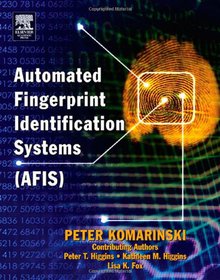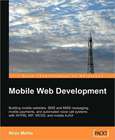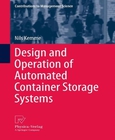Automated Fingerprint Identification Systems

Book Details:
| Publisher: | Academic Press |
| Series: | Academic Press |
| Author: | Peter Komarinski |
| Edition: | 1 |
| ISBN-10: | 0124183514 |
| ISBN-13: | 9780124183513 |
| Pages: | 312 |
| Published: | Dec 27 2004 |
| Posted: | Nov 19 2014 |
| Language: | English |
| Book format: | |
| Book size: | 3.61 MB |
Book Description:
An easy-to-understand synopsis of identification systems, presenting in simple language the process of fingerprint identification, from the initial capture of a set of finger images, to the production of a Rapsheet. No other single work exists which reviews this important identification process from beginning to end. We examine the identification process for latent (crime scene) prints and how they are identified with these systems. While the primary focus is automated fingerprint identifications, the book also touches on the emergence and use of fingerprints in other biometric systems.Criminal justice administrators, policy makers, and students of forensic science and criminal justice will find a reference to the known limitations and advantages of these systems.This book provides information as to the critical and continual need for properly trained individuals as well as an understanding of the direct and indirect costs associated with maintaining these systems. An understanding of the entire system and what it means will prove invaluable. Why are there missed identifications? Why are identifications made on one database that are not made on another database? Key terms and issues are included, and well as suggestions for improving the overall number of identifications.The book will go beyond process and also discuss issues such as interoperability, management strategies for large databases, contract development, lights out verification and several other issues which impact automated identifications. - The first comprehensive title on this subject area- Outlines in detail the entire process of fingerprint gathering and identity verification - The future of AFIS will is discussed, including national standards in developing multi-agency cooperation/interoperability (U.S.) in addition to the use of AFIS identification world-wide.
Book categories:
Forensic Science , Criminology , Criminal Law , Social Sciences , Law , Politics & GovernmentDownload Link:
Related Books:
Mobile Web Development
Building mobile websites, SMS and MMS messaging, mobile payments, and automated voice call systems with XHTML MP, WCSS, and mobile AJAX
Mobile Web Development shows you how to build a mobile presence for your web applications and sites. It covers targeting different mobile web browsers, sending and receiving SMS and MMS messages, accepting mobile payments, and developing voice- and touchtone-response systems. This book is for web developers who want to provide mobile support for their applications. The book assumes some knowledge of HTML, CSS, and JavaScript. The reader should also know a server-side language. The examples in the book use PHP, but can be adapted easily to other languages. The book does not use J2ME, focusing instead on using the phone's web browser and other standard features....
Design and Operation of Automated Container Storage Systems
The storage yard is the operational and geographical centre of most seaport container terminals. Therefore, it is of particular importance for the whole terminal system and plays a major role fortrade and transport flows. One of the latest trends in container-storage operations is the automated Rail-Mounted-Gantry-Crane system, which offers dense stacking, andoffers low labour costs.This bookinvestigates whetherthe operational performance of container terminals is influenced by the design of these storage systems and to what extent the performance is affected by the terminal's framework conditions, and discusses the strategies applied for container stacking and crane scheduling.A detailed simulation model ispresentedto compare the performance effects...
Digital Control Systems
Design, Identification and Implementation
The extraordinary development of digital computers (microprocessors, microcontrollers) and their extensive use in control systems in all fields of applications has brought about important changes in the design of control systems. Their performance and their low cost make them suitable for use in control systems of various kinds which demand far better capabilities and performances than those provided by analog controllers. However, in order really to take advantage of the capabilities of microprocessors, it is not enough to reproduce the behavior of analog (PID) controllers. One needs to implement specific and high-performance model based control techniques developed for computer-controlled systems (techniques that have been extensively tested in pra...
2007 - 2021 © eBooks-IT.org



